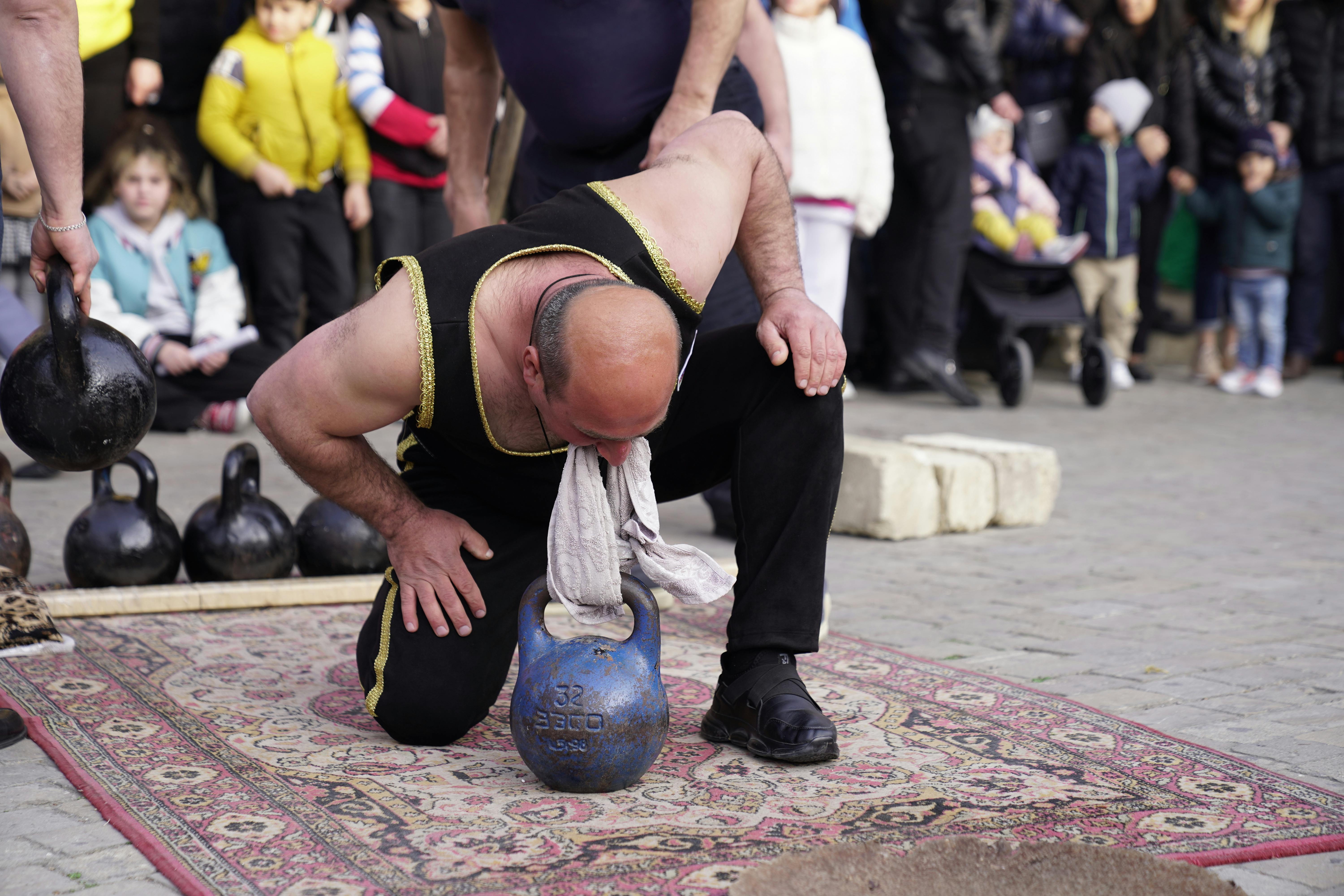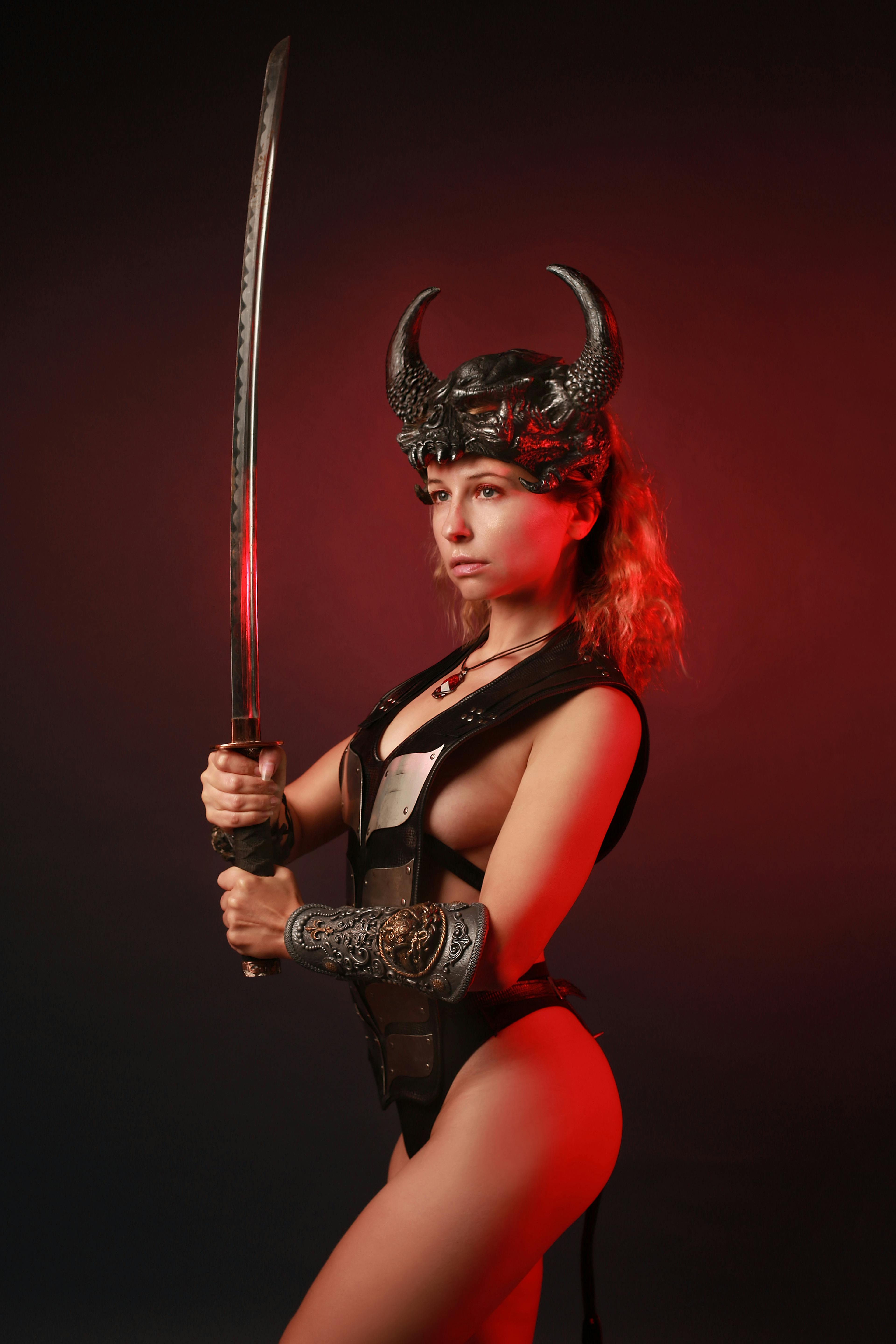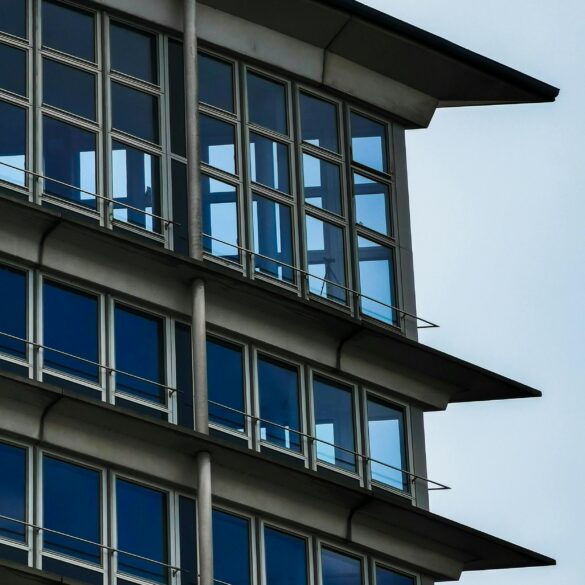Why Iceland Produces So Many Strongmen: Culture, History, and Science
What is it about Iceland that produces freakishly powerful humans with enough mass to yoke a pickup truck or hold up a boulder heavier than a grand piano? Why, out of a population smaller than many suburbs, does Iceland consistently churn out World’s Strongest Man winners, legendary powerlifters, and modern-day giants who literally redefine human limits? As someone who spent years both marveling at strongman broadcasts and wandering the actual gyms of Reykjavik, I can tell you: the answers are deeper than “good genetics” or “Viking heritage.” They’re as complex—and as raw—as the Icelandic winter wind.
Let’s get one thing straight: Iceland’s reputation as the “strongman country” isn’t some PR tactic. It’s rooted in centuries-old sagas, a unique relationship with adversity, and a modern sports ecosystem that, frankly, punches way above its weight. In fact, according to statistics compiled over the last two decades, Iceland has more World’s Strongest Man champions per capita than any country on earth1.
But before we get lost in hero-worship, I want to break down not only how this island nation got here, but also why it matters so much—culturally, scientifically, and for anyone invested in stories of human achievement. Honestly, the deeper I go, the more I realize Iceland tells us something profound about national character and what it means to be strong—in every sense.
The Roots: Vikings, Sagas, and Ancestral Strength
To really understand this, you have to go way back—far beyond Magnus ver Magnusson and Hafthor’s “Game of Thrones” fame. Iceland’s settlement by Norse Vikings in the ninth and tenth centuries set the tone. Life on this rock, battered by Atlantic storms, was (and still is) defined by endurance and resourcefulness. Every Icelandic child grows up with the sagas—epic oral histories written down in the 13th century, full of tales where strength, cunning, and resilience are the difference between life and death2.
I can’t count how many times I heard local strongman competitors cite these ancient stories as not just inspiration, but as personal benchmarks. According to historians, Icelandic sagas are uniquely fixated on physical feats—a cultural artifact uncommon even among other Norse societies3.
Unlike many places where athletic achievement is a path to social mobility, in Iceland, strength has been part of the moral code—woven into identity and even laws (historically, certain legal rights could be won by winning “ordeals of strength”).
From Ancient Trials to Modern Sport
They didn’t have power racks and protein powder back then—just stones, logs, and the need to survive relentless winters. Early Icelandic farmers hauled massive rocks (still on display today, like the legendary Húsafell Stone) to prove worthiness. If you could lift the “fullsterkur” (full strength) stone onto a ledge—a test still repeated in tourist towns and rural backyards—you earned your place in adult society. Here’s where the thread ties through centuries: this same stone-lifting ethos sits at the heart of Iceland’s modern strongman rituals4.
From Folklore to ESPN: The Modern Strongman Boom
Fast forward to the late 20th century. Iceland, newly wealthy after WWII but still stubbornly rural, had hardly any professional sporting infrastructure—no Premier League, no NBA pipeline. But strongman was different. With the first televised World’s Strongest Man events in the late 1970s and 1980s, Icelanders suddenly saw their own farm-tested trials mirrored on the global stage5.
I’ll never forget my first trip to Reykjavik’s “Thor’s Power Gym.” Not just a gym, but a living museum to Iceland’s iron legacy. Signed posters of Jón Páll and Magnus weighed down walls; a working Húsafell replica leaned against a squat rack. What really struck me was how young lifters—even at 16 or 17—took pride in their connection to the old ways. On second thought, maybe pride isn’t quite the word. More like a humble stewardship—a sense of carrying the torch.
- 1980s: Jón Páll and later Magnus ver Magnusson win multiple World’s Strongest Man titles
- 1990s-2000s: Icelandic lifters dominate European cups, Highland Games, and set global records
- 2018: Hafthor Bjornsson wins World’s Strongest Man, mainstreaming Icelandic strength to a global TV audience
- Ongoing: Rural Iceland celebrates local festivals where “lifting the stones” is as important as soccer
The international field is now stacked with Eastern Europeans and Americans—but Iceland keeps producing household names in strongman at a rate that blows most countries away6. Even in 2024, half a dozen Icelanders are in the world’s top 30 by official strongman rankings. How is this statistically possible?
Strength at Iceland’s Core: Rural Life, Adversity, and Identity
Iceland’s national mentality is forged on the anvil of adversity. We’re talking isolation. Brutal winters. Erupting volcanoes. Minimal arable land. By and large, survival meant everyone in the community—kids included—pulled their literal and metaphorical weight. This rural collective struggle codes “resilience” and “physicality” deep into the psyche7.
I remember chatting with a fisherman at Þingeyri. He laughed that, as a boy, his chores included carrying sheep feed across icy fields before daylight. His point: “We get strong because we must. The gym is just a modern barn.”
And then there’s the size of the country. With just over 370,000 people—roughly the population of New Orleans—Iceland’s intimacy means that sports success, especially in a discipline as challenging as strongman, becomes a shared national victory. The saga lives on, only now it’s broadcast via satellite, streaming, and viral TikToks8.
Where Modernity Meets Tradition
This is where the anthropology gets interesting. Modern Reykjavik is a cosmopolitan hub with sushi bars, digital start-ups, and bio-domes. Yet rural communities still organize “stone lifting festivals” and children’s strongman games. You see teenagers in Nike sportswear throwing logs beside octogenarians reciting old poetry. I need to revise my earlier point—a pure “Viking” explanation misses the modern complexity. The reality is more of a feedback loop: tradition informs pride, pride produces elite lifters, elite lifters reinforce tradition. Not linear, but cyclical.
This brings up another point: Iceland’s social structure values egalitarianism. There’s no “elite club” for strongman training—everyone from bus drivers to lawyers uses the same gyms. And local pro lifters? You’ll catch them at the same public pool sauna as tourists. Funny thing is, the line between local custom and international sport gets blurry pretty fast.
Is It Genetics? The Icelandic DNA Question
Anyone who’s watched Hafthor deadlift 501kg or seen Rúnar Alex Rúnarsson in the soccer net probably wonders: are Icelanders genetically engineered for size and strength? Having asked several Icelandic sports scientists this very question, I’m still not entirely convinced genetic determinism tells the full story—a notion echoed by Harvard anthropologists studying Iceland’s demography9.
| Trait | Icelandic Population | European Average | Outlier Examples |
|---|---|---|---|
| Average Male Height | 181 cm | 177 cm | Hafthor: 206 cm |
| Average Male Weight | 85 kg | 80 kg | Magnus ver: 125 kg |
| Power/Strength Markers | High (above EU avg) | Baseline | Frequent WSM winners |
| Specific Gene Variants* | ACTN3 R allele enriched | Baseline | Limited research |
*ACTN3 is sometimes called the “speed gene,” associated with power/strength performance. Data from University of Iceland, 2023.

So, does this mean Icelanders are born to be strongmen? I’ll be honest—I waver. The genetic story is compelling, but it’s only a chapter, not the whole saga. As a colleague once pointed out (over local smoked lamb in Reykjavik), “Put Icelandics in a soft world, they’d be like everyone else.” The science suggests higher rates of certain strength-related alleles, yes, but environment, diet, and culture amplify those edges10.
Iceland’s strongman dominance arises from a unique combination of ancestral values, physical environment, communal sports tradition, above-average genetics for size and power, and national identity that celebrates physical achievement as cultural heritage.
The Icelandic Training System: Gyms, Nutrition, and Method
One might think that becoming a world-class strongman requires some secret, arcane methodology. On the contrary, Icelandic training is often strikingly practical, almost minimalistic. Gyms are communal, not exclusive; equipment is basic and durable. Last year, while visiting the famed Jakabol gym, I watched a teen deadlift beside a former WSM finalist—no celebrity treatment, no private coaching. Coaches emphasize gradual strength accumulation, technical discipline, and—you guessed it—plenty of stone lifting11.
Nutrition? Traditional Icelandic fare skews high-protein, high-fat: lamb, fish, skyr (a local yogurt-like dairy, packed with casein protein), rye breads, potatoes, and, during winter, hearty stews. This isn’t accidental—these are foods tailored to fuel bodies facing 16-hour nights and subzero gales.
- Strongman training begins as early as primary school, often part of PE or community festivals
- Multigenerational mentorship—elder strongmen routinely teach teens old stone lifting techniques
- Olympic lifting, Highland Games skills, powerlifting, and manual labor are interwoven in programs
- Emphasis on “usable strength”—functional movement for real-world challenges
Speaking of which, let me clarify: Icelanders rarely chase strength for its own sake. Instead, it’s always tied to communal usefulness. During interviews with three different national champions, the refrain was: “If you’re strong, you share it.” This collectivist ethos is rare in western sports culture and, from my perspective, a massive part of why Iceland’s athletes keep breaking barriers.
The Role of Community and Mentorship
Icelandic strength culture isn’t just about lifting heavy—in many ways, it’s about lifting each other. The country’s intimate size means athletes can access role models (and critics) in daily life, often at the same after-work café. I remember a Reykjavik schoolteacher explaining that if one kid shows aptitude, the town rallies. Training funds are crowdsourced, schedules flex, and no success is “solo.” Ever notice how, in interviews, Icelandic champions deflect praise to their coaches, families, or even local farmers? That’s not humility theater. It’s reflex.
Why It Matters: Culture, Media, and Global Impact
So, why does this all matter?
- For sports fans: Iceland’s dominance in strength events is an outlier—worth understanding from historical, cultural, and scientific perspectives
- For cultural observers: Strongman is a microcosm of Icelandic values—resilience, community, pride, and adaptability
- For fitness tourists: Gyms like Thor’s Power Gym and Jakabol have become pilgrimage sites; “stone tours” are a real thing
- For policymakers: Iceland’s success offers a case study in how sports ecosystems rooted in community and heritage can drive national achievement, even with limited resources
Let that sink in for a moment. While most nations hustle for athletic glory through high-tech infrastructure and relentless recruitment, Iceland does it with tradition and teamwork. What puzzles me sometimes is why other countries don’t borrow more from this playbook, especially around mentorship and inclusive access. Actually, thinking about it differently, maybe it’s because Iceland’s cohesion is hard to replicate at scale. It’s a small country phenomenon, amplified by environment and centuries-old hardship.
Strongman in Global Media and the Icelandic “Brand”
Hafthor’s rise to international pop culture (thanks, “Game of Thrones”) exploded Iceland’s “strongman tourism” industry in just five years. What’s really funny is seeing groups of Americans in the Reykjavik Hilton lobby, dead serious about tracking down “the Game of Thrones gym.” Yet, even as Iceland’s strength brand becomes international commerce, its roots haven’t been commodified in the way you’d expect. The country resists turning its legends into caricatures. At the same time, they see the opportunity: from guided “stone lifting” expeditions to local farmers marketing strength-based adventures, Iceland leverages its narrative without distorting it.
Iceland’s strongman legacy is both authentic and evolving. It’s rooted in community, celebrated through media, and monetized—carefully—by locals navigating the line between tradition and tourism.
Country Fact: Icelandic Rural Traditions
Implementing Schema Markup for Sports Authority
To maximize search visibility for content related to Icelandic strongman culture and tourism, I recommend integrating structured schema markup—specifically SportsEvent and LocalBusiness schema for training centers (like Thor’s Power Gym) and strength-based tourism experiences. This step enables rich result appearances, local pack prominence, and improved travel guide inclusion—critical for fitness tourism and Iceland’s growing international itinerary presence. Refer to Google Developers’ official sports event schema docs for implementation, and consider LocalBusiness schema reference for gym/tour operator listings.
Bringing It All Together: Iceland’s Legacy and What It Means for You
I’ll be completely honest—writing this deep-dive has only increased my respect (and, okay, mild envy) for Iceland’s strongman tradition. On second thought, “tradition” doesn’t even capture the immediacy here. It’s alive, relevant, and yes, a little intimidating. Whether you’re a gym newbie or a lifetime iron addict, there’s something uniquely powerful about a national culture that celebrates not just strength, but strength in context: for service, for the group, as resilience under pressure, as pride wedded to humility. It’s a hard balance. Iceland nails it.
What strikes me most is that Iceland’s approach is accessible. No genetic lottery ticket required. Anyone—whether local or visitor—can connect to this story, attempt the stones, and be part of a lineage that’s more about effort than birthright. What I should have emphasized sooner is just how international the Icelandic strongman community has become. Conferences, online mentorship, gym exchange programs…it’s not a closed club. The future, in my view, lies in how these traditions evolve and are shared rather than kept in a bottle.
If you’re traveling to Iceland, schedule a visit to a rural strongman event. Book a group stone-lifting tour. Engage with local history—not as a tourist, but as a participant. For coaches and trainers worldwide: consider what elements of the Icelandic model (mentorship, functional strength, community access) you can adapt locally.
Join the conversation: Which traditions from your own community build true resilience? What’s your story of strength, literal or metaphorical? Share your insights below or on social media using #StrongmanLegacy.
References
Works Cited and Source Verification


